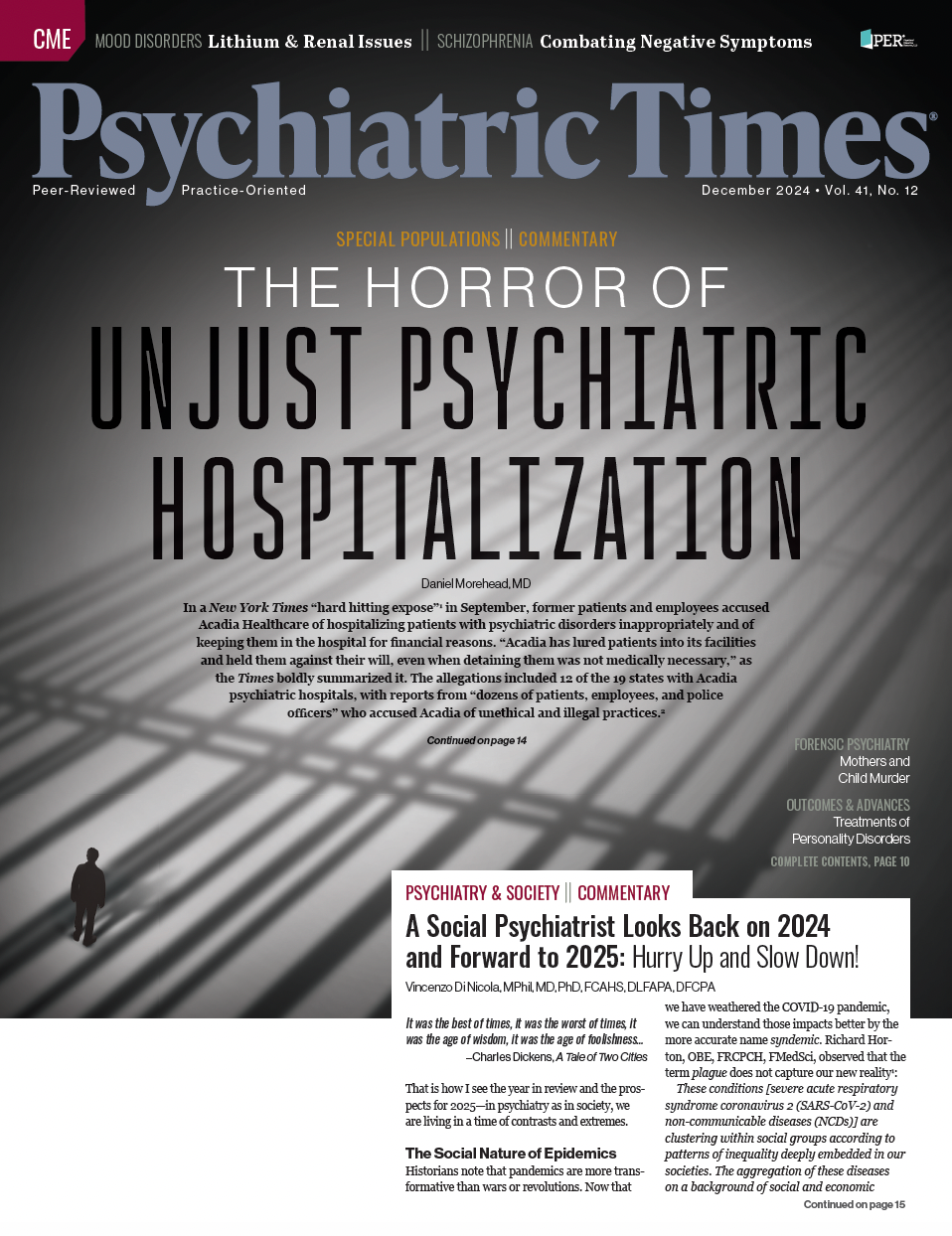
Publication
Article
Psychiatric Times
Psychopharmacology Innovations
Author(s):
Key Takeaways
- Reserpine, a VMAT1 and VMAT2 inhibitor, was approved in 1955 for hypertension, with tetrabenazine later approved for Huntington's chorea.
- Deutetrabenazine and valbenazine, novel VMAT2 inhibitors, were FDA approved in 2017 for tardive dyskinesia, offering improved dosing and tolerability.
- Esketamine, approved in 2019, marked a shift in depression treatment by targeting NMDA-GR, enhancing synaptogenesis and neuroplasticity.
- Auvelity, combining dextromethorphan and bupropion, was approved in 2022 as the first daily oral nonmonoamine monotherapy for major depressive disorder.
Check out 2 new psychopharmacology innovations!
Tasphong/AdobeStock

Note: This article is a Sidebar to "A Continued Evolution" by John J. Miller, MD.
Vesicular Monoamine Transporter Type 2 Inhibitors
The US Food and Drug Administration (FDA) approved reserpine in 1955. Reserpine is a nonspecific irreversible inhibitor of both vesicular monoamine transporter type 1 (VMAT1) and VMAT2 transporters primarily used in the United States to treat hypertension. Synthetic analogues to reserpine were developed in the 1950s; the most popular is tetrabenazine, which was finally approved by the FDA in 2008 for the treatment of chorea due to Huntington disease. Tetrabenazine differs significantly from reserpine by being a reversible inhibitor of VMAT2 only, primarily in the central nervous system.
Interestingly, tetrabenazine demonstrated some improvement in tardive dyskinesia (TD) in off-label usage, albeit with the need for dosing 3 times daily and tolerability issues. In attempts to address these issues, 2 teams of innovators modified the chemical structure of tetrabenazine: one by deuterating several of the hydrogen atoms and creating stronger chemical bonds, which prolonged the half-life and improved tolerability, and the other by synthesizing a prodrug by adding the amino acid valine to the active metabolite of tetrabenazine, which allowed for once-daily dosing and improved tolerability. Serendipitously, both novel VMAT2 inhibitors, deutetrabenazine (Austedo, Austedo XR) and valbenazine (Ingrezza) were FDA approved for the treatment of TD in 2017, finally providing effective treatments 60 years after TD was first described.1
N-Methyl-D-Aspartate–Glutamate Receptor Antagonists
In 1958, iproniazid became the first antidepressant approved by the FDA and ushered in 60 years of the monoamine hypothesis of depression treatment. The FDA approved intranasal esketamine (Spravato) in 2019 as the first nonmonoamine molecule for the treatment of major depressive disorder (MDD). Its putative mechanism of action is antagonizing the N-methyl-D-aspartate–glutamate receptor (NMDA-GR), beginning a cascade of molecular events that ultimately increases the mammalian target of rapamycin, a well-established molecule that orchestrates synaptogenesis and neuroplasticity as soon as 4 hours after NMDA-GR antagonism.
Building on this understanding, innovators hypothesized that dextromethorphan’s similar NMDA-GR antagonism may also provide antidepressant effects. However, dextromethorphan’s very short half-life presented a challenge. Researchers combined it with bupropion at doses lower than those used to treat MDD, taking advantage of its strong cytochrome P450 2D6 antagonism. By doing so, they significantly increased dextromethorphan’s half-life to approximately 22 hours, allowing for dosing twice daily and, in some cases, once daily. The FDA approved this combination in 2022 under the name of Auvelity, making it the first daily oral nonmonoamine monotherapy antidepressant to treat MDD.2 These 2 antidepressants that target the NMDA-GR joined the previously exclusive monoamine-only antidepressant club and began changing the treatment landscape.
Dr Miller is Medical Director, Brain Health, Exeter, New Hampshire; Editor in Chief, Psychiatric Times; Staff Psychiatrist, Seacoast Mental Health Center, Exeter; Consulting Psychiatrist, Insight Meditation Society, Barre, Massachusetts.
References
1. Schonecker M. Paroxysmal dyskinesia as the effect of megaphen. Article in German. Nervenarzt. 1957;28(12):550-553.
2. Auvelity. Prescribing information. Axsome; 2022. Accessed November 11, 2024. https://www.axsome.com/auvelity-prescribing-information.pdf

2 Commerce Drive
Cranbury, NJ 08512
All rights reserved.





